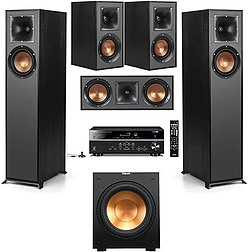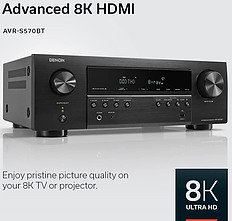Introduction
Home theater systems have become increasingly popular in recent years, as more and more people are looking to recreate the cinematic experience in the comfort of their own homes. A home theater system allows you to enjoy movies, TV shows, and music with high-quality audio and video, creating an immersive and entertaining experience. How to Buy a Home Theater System is your guide to finding all the components to buy and set up a quality Home Theater System.
the cinematic experience in the comfort of their own homes. A home theater system allows you to enjoy movies, TV shows, and music with high-quality audio and video, creating an immersive and entertaining experience. How to Buy a Home Theater System is your guide to finding all the components to buy and set up a quality Home Theater System.
Understanding the Basics of Home Theater Systems
A home theater system is a combination of audio and video components that work together to create a cinematic experience in your home. The basic components of a home theater system include a television or projector, speakers, an audio receiver or amplifier, and source devices such as a Blu-ray player or streaming device. The television or projector is responsible for displaying the video content, while the speakers and audio receiver provide the audio.
Determining Your Budget for a Home Theater System
In how to buy a home theater system, it is important to set a budget. This will help you determine what components you can afford and ensure that you don’t overspend. When determining your budget, consider the quality of audio and video you desire, as well as any additional features or accessories you may want. It is also important to factor in the cost of installation and any necessary cables or connectors.
To determine your budget, start by researching the average cost of home theater systems with similar features to what you desire. Consider whether you want to purchase new or used components, as used equipment can often be more affordable. Additionally, consider any financing options that may be available to you. Once you have determined your budget, stick to it and prioritize your purchases based on what is most important to you.
Choosing the Right Room for Your Home Theater System
How to buy a home theater system guide to choosing the right room for your home theater system. This guide is crucial to ensure optimal performance and enjoyment. Ideally, you should select a room that is dedicated solely to your home theater system, as this will minimize distractions and allow for better sound isolation. If a dedicated room is not possible, choose a room with minimal windows and natural light, as this can interfere with the video quality. Most like myself will choose their living room with its comfortable seating and fmailiar decorations for their home theater room. Adding a movie night throw rug or home theater movie night decor a movie night snack tray or movie night lanket where possible will add to your home theater experience.
Consider the size and shape of the room, as well as the placement of doors and windows. The room should be large enough to accommodate the screen and seating comfortably, with enough space for proper speaker placement. Additionally, consider the acoustics of the room, as certain materials and layouts can affect the sound quality. If necessary, you can make acoustic improvements to the room by adding sound-absorbing panels or curtains.
Selecting the Right Screen and Projector for Your Home Theater System
The screen 100” 16:9 and projector are key components of a home theater system, as they are responsible for displaying the video content. There are several types of screens available, including flat-panel TVs, projection screens, and motorized screens. Flat-panel TVs are a popular choice due to their ease of installation and high-quality picture. Projection screens, on the other hand, offer a larger viewing area and can create a more immersive experience.
When selecting a screen, consider the size of the room and the viewing distance. The screen should be large enough to provide an immersive experience without overwhelming the room. Additionally, consider the aspect ratio of the screen, which refers to the width and height of the image. The most common aspect ratios are 16:9 for widescreen content and 4:3 for standard definition content.
Choosing the Right Audio System for Your Home Theater System
The audio system is an essential component of a home theater system, as it is responsible for providing high-quality sound. There are several types of audio systems available, including soundbars, surround sound systems, and Dolby Atmos systems. Soundbars are a popular choice due to their compact size and ease of installation for smaller rooms. Surround sound systems, on the other hand, offer a more immersive experience with multiple speakers placed around the room.
There are several types of audio systems available, including soundbars, surround sound systems, and Dolby Atmos systems. Soundbars are a popular choice due to their compact size and ease of installation for smaller rooms. Surround sound systems, on the other hand, offer a more immersive experience with multiple speakers placed around the room.
When selecting an audio system, consider the size of the room and the desired sound quality. The audio system should be able to fill the room with sound without distortion or loss of quality. Additionally, consider the number of channels the audio system supports. A 5.1 channel system, the Klipsch Reference System pictured above, includes five speakers and a subwoofer, while a 7.1 channel system includes seven speakers and a subwoofer.
Understanding the Different Types of Home Theater Speakers
There are several types of home theater speakers available, each with its own advantages and disadvantages. The most common types of speakers include floor-standing speakers, bookshelf speakers, in-wall speakers, and in-ceiling speakers. Floor-standing speakers are large and powerful, providing a full range of sound. Bookshelf speakers, on the other hand, are smaller and more compact, making them ideal for smaller rooms or tight spaces.
In-wall and in-ceiling speakers are designed to be installed directly into the walls or ceiling, providing a clean and unobtrusive look. These speakers are a great option if you want to minimize clutter and maintain a clean aesthetic in your home theater room. When selecting speakers, consider the size of the room and the desired sound quality. Additionally, consider the power handling and frequency response of the speakers, as this will affect the overall sound quality.
Deciding on the Right Amplifier or Receiver for Your Home Theater System
The amplifier is responsible for powering the speakers and ensuring that they receive the necessary power to produce high-quality sound. An amplifier is not necessary unless you choose an amplifier, pre-amplifier set up as a receiver has them internally. When selecting an amplifier or receiver, consider the power output and impedance compatibility with your speakers. The power output should be sufficient to drive your speakers without distortion or loss of quality. Additionally, consider the number of channels the amplifier or receiver supports, as this will determine how many speakers you can connect.
Choosing the Right Cables and Connectors for Your Home Theater System
Choosing the right cables and connectors is crucial to ensure optimal performance and connectivity in your home theater system. When selecting cables, consider the length and quality. Longer cables may require thicker gauge wire to prevent signal loss or degradation. 14 guage copper wire is generally heavy duty enough for almost any configuration. I have 14 guage copper running from my receiver up the wall to the top of the peaked ceiling. Then across the ceiling and down the other side to my Speakers hanging on the wall at the back of the room. Additionally, consider the type of connectors used on the cables, as this will determine compatibility with your components. You can purchase banana plugs, or speakers will accept bare wire firmly tightened into them.
For video connections, HDMI cables are the most common and provide high-definition video and audio in a single cable. When selecting HDMI cables, consider the version and features supported, such as 4K resolution or HDR. For audio connections, consider using digital optical or coaxial cables for high-quality sound. Additionally, consider using high-quality speaker cables for optimal sound quality.
Setting Up Your Home Theater System for Optimal Performance
Once you have selected and purchased all the necessary components for your home theater system, it is important to set it up properly for optimal performance. Start by placing the screen or projector in the desired location, ensuring that it is level and centered. Next, position the speakers around the room, taking into account the recommended placement guidelines for each type of speaker.
up properly for optimal performance. Start by placing the screen or projector in the desired location, ensuring that it is level and centered. Next, position the speakers around the room, taking into account the recommended placement guidelines for each type of speaker.
Connect all the components using the appropriate cables and connectors, ensuring that they are securely connected and that the connections are tight. Once everything is connected, power on the components and configure the settings according to your preferences. This may include adjusting the audio levels, calibrating the video settings, and configuring any additional features or accessories.
Maintaining Your Home Theater System for Longevity and Performance
To ensure the longevity and performance of your home theater system, it is important to properly maintain it. Start by regularly cleaning the components, including the screen or projector, speakers, and amplifier. Use a soft cloth or brush to remove dust and debris, taking care not to scratch or damage the surfaces.
Additionally, check the cables and connectors regularly to ensure that they are securely connected and that there are no signs of wear or damage. If necessary, replace any damaged cables or connectors to prevent signal loss or degradation. Finally, consider investing in a surge protector or power conditioner to protect your components from power surges or fluctuations.
Conclusion: Complete Surround Sound Systems
In conclusion, a home theater system can provide a high-quality audio and video experience in the comfort of your own home. By understanding the basics of home theater systems and following the tips provided, you can select and maintain the  right components for your needs. Whether you are a movie enthusiast or simply enjoy watching TV shows and listening to music, a home theater system can enhance your entertainment experience and add value to your home. So, why wait? Start researching and planning your own home theater system today!
right components for your needs. Whether you are a movie enthusiast or simply enjoy watching TV shows and listening to music, a home theater system can enhance your entertainment experience and add value to your home. So, why wait? Start researching and planning your own home theater system today!
Nakamichi Shockwave Elite, Yamaha Audio YHT-4950U, Klipsch Reference Premiere, Klipsch Premiere, Klipsch Synergy, Onkyo HT-S3910, Polk Audio/Denon, SAMSUNG HW-Q67CB/ZA-RB, Sony STRDH590, Logitech Z906 and the very inexpensive Pyle 5.1 Channel Home Theater Systems.
I’m excited to have you as part of the community! I look forward to bringing you more exciting content in the future. In the meantime, please don’t hesitate to reach out if you have any further questions or comments. Here at Audio Video Adventures is where you can get all the latest in Projectors, Receivers, Speakers, and accessories as well as everything else you need for the ideal home theater experience. You can purchase any of the items in this blog post by clicking on the blue highlighted text and or search from there to find what you are looking for in any category.

